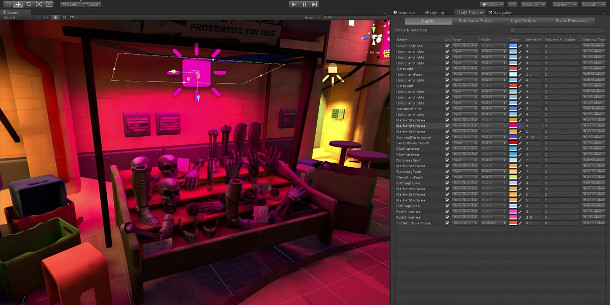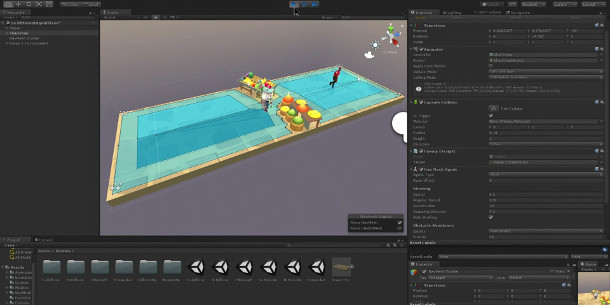Unity Technologies releases Unity 5.6

Originally posted on 2 March 2017. Scroll down for news of the public release.
Unity Technologies has unveiled new features in Unity 5.6, the next update to its game engine and development environment, including a new progressive lightmapper and dynamic navmesh system.
The new features in the release, which is due to ship on 31 March, were announced during the Unity keynote at GDC 2017.
New lighting features include a smart progressive lightmapper
Although Unity 5.6 has been in public beta since December – you can read about the features announced at the time in our original story – the latest update introduces features not present in the original beta release.
These include the new lighting tools: according to Unity Technologies technical director Lucas Meijer, the “focus” of the 5.6 release.
New features include a new light explorer panel (you can see it in the screenshot above), enabling users to adjust lights’ intensity, colour and shadow type, or switch them between lighting modes.
The update also introduces the new progressive lightmapper announced in previous tech previews.
When a lightmap is rebaked, the system provides a near-instant viewport preview, focusing initially on those areas of the scene visible to the view camera. In the live demo from the keynote, the preview appeared within a few seconds in what would otherwise have been an 18-minute bake.
Meijer described the new system as “moving the first point of feedback forward”, enabling artists to iterate lighting schemes or reject obviously incorrect changes much faster.

New runtime navigation mesh system
Another toolset to receive a significant update in Unity 5.6 is the navigation mesh system (above).
Navmeshes are now components, not scene-wide objects, making it possible to place multiple separate navmeshes within a scene – including the option to link them – or include them in prefabs.
The meshes are calculated at runtime, meaning that they update according to changes in scene geometry.
“Whether you have an environment that recalculates at runtime or that is completely procedurally generated these tools can work for you,” said Meijer.
New build targets let devs target China’s Android app market
New build targets include Google’s Cardboard and Daydream mobile VR platforms, on both iOS and Android; Facebook Gameroom and Chinese smartphone manufacturer Xiaomi’s Android app store.
The latter is important from a business point of view, since it enables Western developers to break into the huge Chinese app market, which is not currently being served by Google Play.
According to Xiaomi VP Jerry Shang, sales through its app store totalled around $300 million last year – 99% of them generated by Chinese developers.
Shang noted that the new build target enables devs to submit games for release in China in “only four steps”, with Xiaomi helping to obtain the necessary official paperwork: a key legal stumbling block.
New video player, new 2D animation tools, native Vulkan support
Other features include a new 4K-capable video player aimed at 360-degree VR content, native support for the Vulkan graphics API on Windows, Tizen and Android, and extended support for Apple’s Metal API.
There are also a number of new 2D animation and 3D dynamics tools.
We covered all of these features in our reports on last year’s Unite Los Angeles conference and the original beta release, so check out those stories for more details.
$95 TextMesh Pro add-on is now free to download
Not strictly part of the 5.6 release, but annouced alongside it, is TextMesh Pro, which Unity Technologies has acquired from original developer Digital Native Studios.
Previously sold for $95, the add-on, which provide a more fully featured replacement for Unity’s own UI text and text mesh, will be integrated natively into Unity in future releases.
In the mean time, the current release can be downloaded free from the Unity Asset Store.
Updated 3 April 2017: Unity 5.6 is now shipping for Windows 7 and above and Mac OS X 10.8 and above.
The software is available on a rental-only basis, with free Personal subscriptions are available to anyone earning under $100k/year. Commercial Plus and Pro subscriptions cost $35/seat/month and $125/seat/month. You can read a feature comparison of the different editions here.
Read a full list of new features in Unity 5.6 on Unity Technologies’ blog
